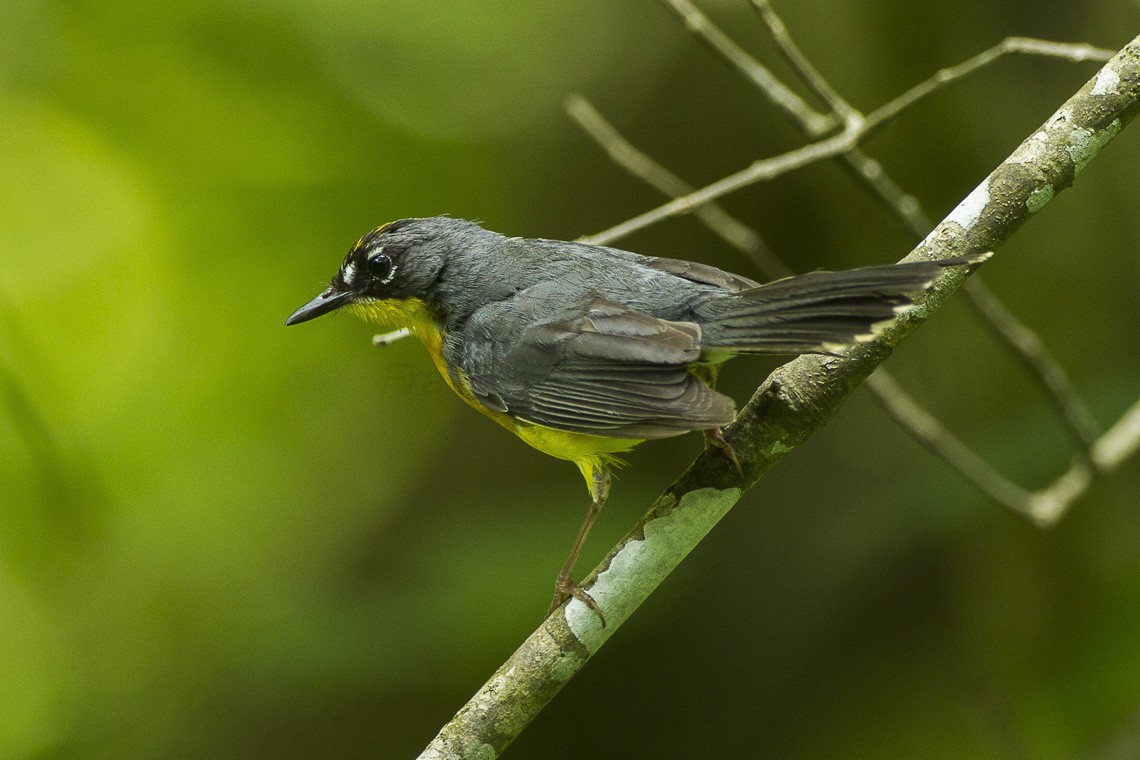Fan-tailed Warbler
A species of Basileuterine Warblers Scientific name : Basileuterus lachrymosus Genus : Basileuterine Warblers
Fan-tailed Warbler, A species of Basileuterine Warblers
Botanical name: Basileuterus lachrymosus
Genus: Basileuterine Warblers
Content
Description General Info
 Photo By Francesco Veronesi , used under CC-BY-SA-2.0 /Cropped and compressed from original
Photo By Francesco Veronesi , used under CC-BY-SA-2.0 /Cropped and compressed from original Description
The fan-tailed warbler (Basileuterus lachrymosus) is a New World warbler in the genus Basileuterus that lives along the Pacific slope from northern Mexico to Nicaragua. Vagrant records exist for Arizona, New Mexico and Texas. It is yellow on its throat and underparts with a tawny wash on its chest. The head is gray with a black-framed yellow crown and white around the eyes. The undertail coverlets are white. They are 5.8-6.3 in (14.5–16 cm) long and have pleasant, upslurred song. Fan-tailed warblers live in and at the edge of evergreen and semideciduous forest, especially near ravines. They eat ants, especially army ants, and are seen hopping around on either the forest floor or close to it. They are found alone or in pairs. Fan-tailed warblers are known to engage in commensal feeding, wherein prey that has been roused or disturbed by the foraging or hunting of another animal is opportunistically captured. They have been observed following and foraging for prey near army ants, other passerines, and nine-banded armadillos. The fan-tailed warbler is sometimes placed in the monotypic genus Euthlypis due to its unique morphology, but its nest, eggs, voice, and juvenile plumage are consistent with Basileuterus. 
Size
14-15 cm (5.5-6 in)
Nest Placement
Shrub
Feeding Habits
Fan-tailed Warbler primarily consume insects and other invertebrates, foraging actively among foliage. Notably adept at capturing prey, no unique dietary adaptations reported.
Habitat
Fan-tailed Warbler thrives in submontane and lower montane habitats, particularly favoring evergreen and semi-deciduous forests with a well-preserved understory. This species is adapted to rugged terrains that include rocky areas, ravines, and forest-covered lava flows. Preferring elevations ranging from 50 to 1800 meters, fan-tailed Warbler is often associated with foothills and lower mountain regions across broader geographical areas.
Dite type
Insectivorous
General Info
Feeding Habits
Bird food type
Bird Feeder Type

Platform
Species Status
Not globally threatened.
Scientific Classification
Phylum
Chordates Class
Birds Order
Perching birds Family
New world warblers Genus
Basileuterine Warblers Species
Fan-tailed Warbler